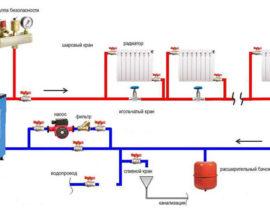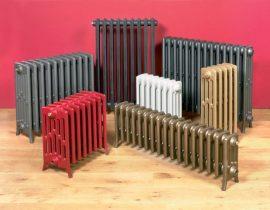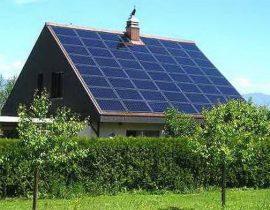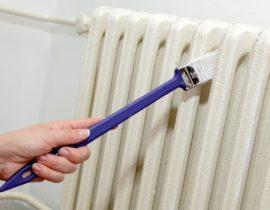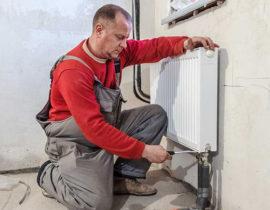The ability to regulate the temperature of the heating batteries allows you to create a pleasant microclimate in the room and significantly save on utility bills in the winter.

The cost of heat carriers increases from year to year, so you need to know how to regulate the temperature of the heating battery in order to do it yourself without involving expensive specialists. The uniformity of heating of all rooms in the dwelling depends on the quality of this work.
Content
- Possibility of adjustment in different heating systems
- What does the regulation of heating batteries give?
- Types, device and methods of adjustment
- Recommended radiator thermostat settings for different rooms.
- The most popular manufacturers of thermal heads
- Conclusion: choosing the most optimal and convenient option for different cases
Possibility of adjustment in different heating systems
Unfortunately, in our time, it is not always possible to regulate the temperature in the room, and, therefore, it makes no sense to install special devices for this on batteries. There is no such opportunity for those living in old apartment buildings, the heating system of which has a single-pipe wiring. In this case, the coolant is supplied from top to bottom, and it sequentially passes through all radiators before returning to the check valve. Such a heating system has many disadvantages:
- Uneven room heating. On the upper floors, the temperature may be higher than on the lower ones.
- Temperature control is possible only for the whole house or a separate entrance using valves in the heating system.
A single-pipe heating system can be improved with a bypass, which is a jumper between the direct and return pipes. Then the adjustment of the radiators becomes possible.
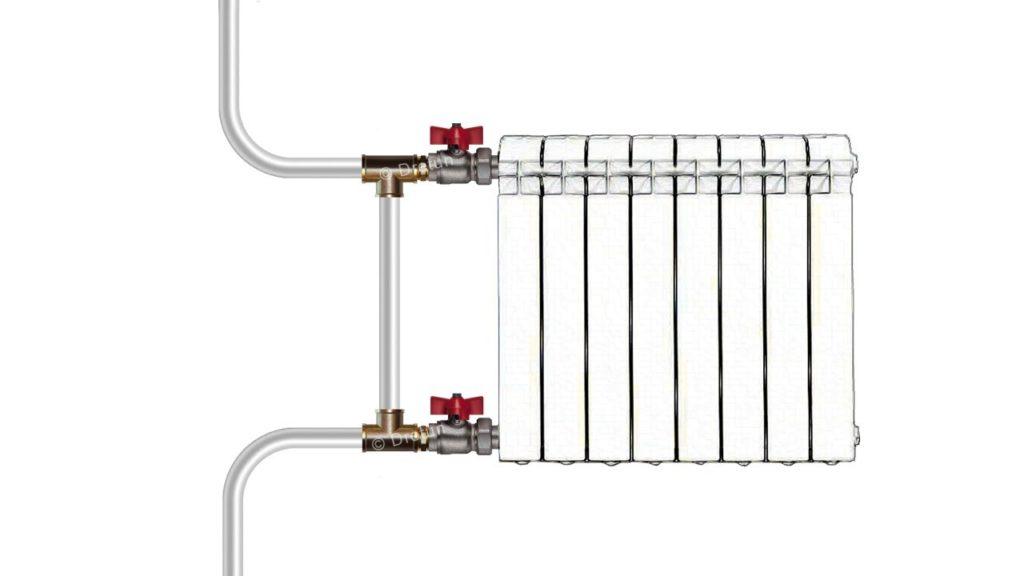
Now, when designing apartment buildings, I rarely lay down a single-pipe wiring diagram. There is a two-pipe heating system, it is devoid of the disadvantages of the previous one. It also consists of distribution risers, but after each radiator, the coolant immediately enters the return line. At the same time, the temperature at the entrances to the heating radiators on any floor is almost the same. Each battery can be equipped with a heat regulator, both manual and automatic.
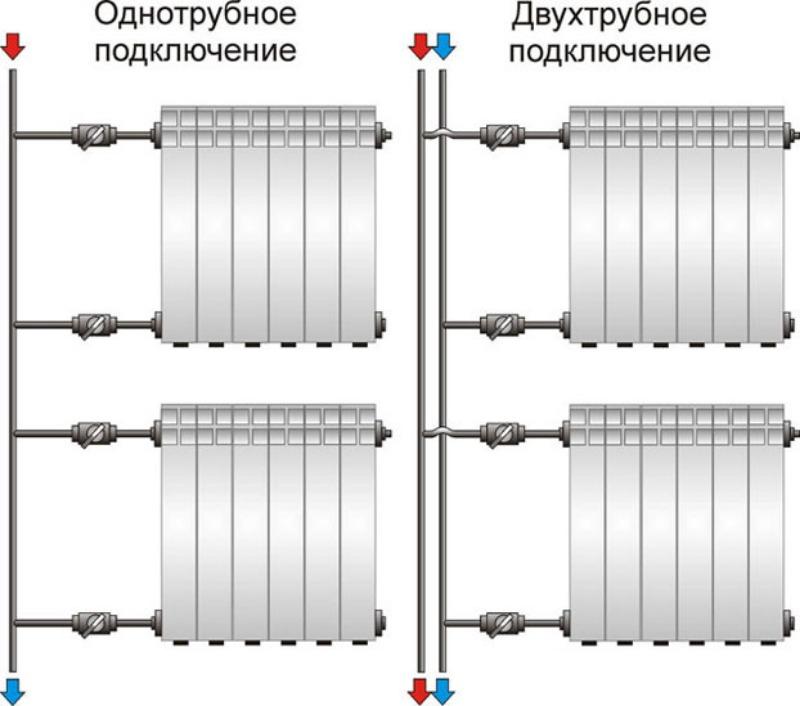
Here it must be borne in mind that any changes in the heating system in an apartment building must be agreed with operating organizations and executive bodies.
If the dwelling has an individual heating system, adjusting the temperature of the batteries is simplified. It is necessary for this:
- Provide a powerful boiler in the heating system.
- Installation of forced pumping of the coolant.
- Install a standard shut-off and adjustment or three-way valve on each battery.
What does the regulation of heating batteries give?
The ability to adjust the temperature of heating radiators to your needs provides several advantages at once:
- Create a comfortable room temperature for its residents.There is no need to constantly open windows, create drafts and spend money on heating the street.
- Savings on heating are significant and can range from 25 to 50%. However, before adjusting the temperature of the heating battery in the apartment, it is recommended to carry out a number of energy-saving measures. Put plastic windows, insulate interpanel seams, make thermal insulation of walls. It is necessary to carry out all these activities before the start of the heating season, so as not to carry out work in an emergency mode later.
- Airing of pipes is removed, the coolant moves freely inside and effectively transfers heat to the room.
- The ability to evenly distribute heat in all rooms.
- If necessary, you can maintain different temperature conditions in different rooms. Let's say you set the temperature in one to 25℃, and in the other it's enough to maintain 17℃.

It is obvious here that if it is possible to adjust the temperature of the radiators, then this must be used. We hope that our article will help you do it right.
Types, device and methods of adjustment
Before you find out, how the thermostat works on a battery, let's recall the principle of operation of a heating radiator. Structurally, it consists of pipes through which the coolant moves, and metal sectionsgiving off heat as it heats up. Sections have a special shape that improves air convection, making space heating efficient.

The greater the power of the heating boiler, the more it heats the coolant, the higher the temperature in the building. By reducing the volume of water passing through the radiator, we can reduce it.
For this, special thermostats and valves are used. Here you need to understand that in this way we can only reduce the temperature in the home, and the thermostats will not be able to increase it. If you need a high temperature in the room, then it is more efficient to increase the power of the heater or increase the number of radiator sections.
Important! The material of the radiator is also important, on which the inertia of the heating system depends. If the batteries are cast iron, then there is no point in a thermostat. Since cast iron, having a large mass, changes temperature too slowly and the result of the adjustment will have to wait a long time. But aluminum heats up quickly and cools down quickly.
How to increase the heat of the batteries?
If a powerful radiator does not produce enough heat energy, then you can try to perform such measures. Check for clogged pipes and filter. Construction waste often enters the heating system. Moreover, this can be both in the old system and in the new building.

If the cleaning did not help, then it remains to take drastic measures:
- Increase the number of sections.
- Raise the temperature of the water that goes into the batteries. This is only possible in an autonomous heating system.
- Check connection type and replace if necessary.
- Place radiator installations also affects heat transfer. It may be advisable to move the radiators.
If there are temperature-controlled radiators in the heating system, then they must have a power reserve, although this may lead to an increase in its cost during arrangement and installation.
Types of control valves
Modern heating batteries allow you to mount special taps on them, which are installed using pipes.According to the principle of action, they are:
- Ball. Used to completely block the flow of water into the battery. This faucet has positions: open and closed. It makes it possible to carry out repairs without stopping the operation of the entire heating system. Refers to cheap fittings and is not used to control the temperature.
- Needle valve. A feature is that it blocks the passage of the coolant 2 times. Mounted in front of the monometer, it is mainly used for its maintenance and repair, as well as to avoid hydraulic shocks when the valves are opened too quickly.
- Standard. These are simple budget adjusting taps. They do not have any scale for setting the temperature. Turning the valve can lower the temperature by an indefinite number of degrees. But, nevertheless, they allow some adjustment.
- Three way valve. It has a T-shape with a locking mechanism. It is used to regulate the coolant in single-pipe heating systems. There is a connecting and separating type. Depending on this, it can have 2 inputs and 1 output or 2 outputs and 1 input. A three-way valve is installed on the bypass.
- With thermal head. You can more precisely adjust the temperature of the batteries. There are mechanical regulators and automatic ones.

For manual adjustment, special valves with straight or angled connections are used. Turning the tap regulates the amount of coolant in the battery. In the closed position, the constipation is lowered and the water is completely shut off.
Having a mechanical valve is quite difficult to maintain a constant temperature in the building, but for all its simplicity, such taps have their advantages:
- Reliability, small debris that enters the heating system cannot disable them.
- Low price.
Of course, few people are satisfied with such a primitive temperature setting. Most people living in heated buildings are interested in, how to regulate the temperature of the heating battery with taps with thermal heads. They are called thermostats.
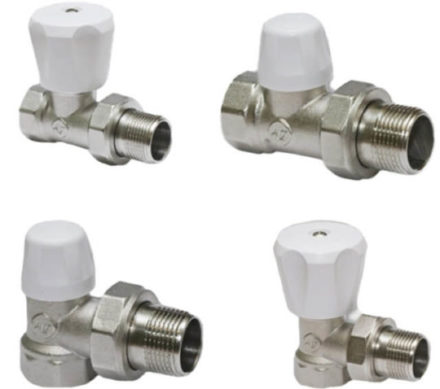
How the thermostat works and how it works
The thermostat or thermostat can be functionally divided into 2 parts. Thermal valve - its lower part, usually metal or brass. Thermal head - the upper part that is put on the thermal valve.
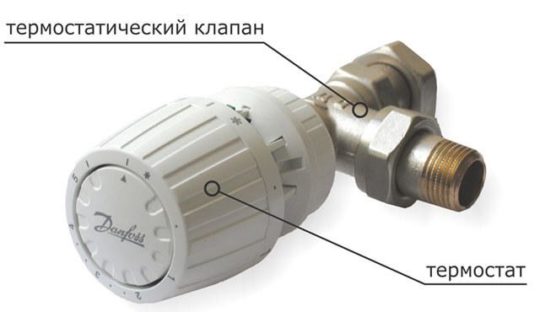
Manufacturers often make a thermal valve unified so that different types of thermal heads can be used with it, with different controls, which can be mechanical or automatic. Thus, you can always change the way the temperature is controlled.
The thermal head is structurally a bellows filled with a liquid or gas, inserted into a cylindrical base, capable of responding to fluctuations in the temperature of the coolant. The principle of operation of the battery thermostat is as follows. When the temperature rises, the liquid or gas expands, which leads to a change in pressure on the shut-off rod (represents a spring), which moves and blocks part of the coolant flow.
When cooled, the spring compresses and tears off space for hot water, which begins to heat the radiator more. Using a control valve with a thermal head, you can adjust the temperature in the room with an accuracy of 1 C.
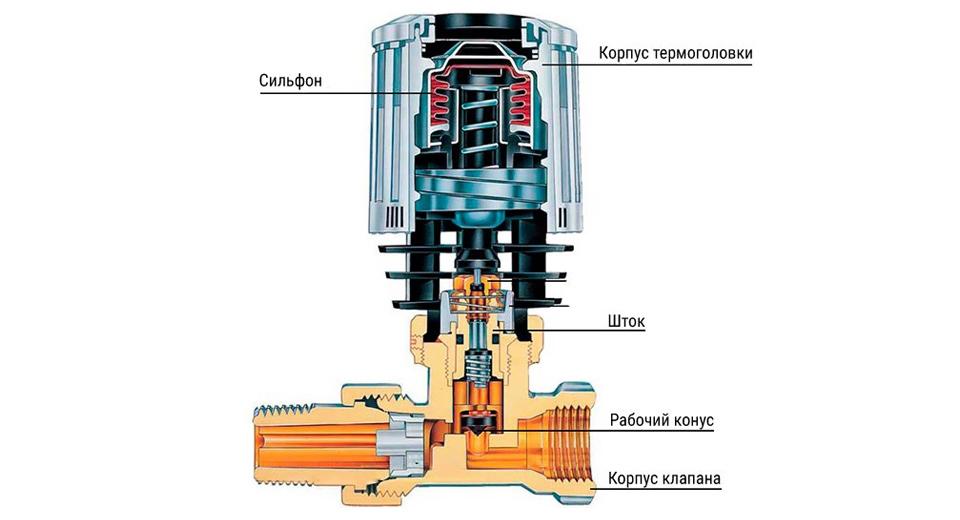
Thermal heads come in various types:
- With built-in thermocouple. They are the most widely used, since basically heat consumers have the opportunity to install them parallel to the floor so that the air in the room envelops them freely.
- With remote temperature sensor. It happens that the radiator is located behind thick curtains, under a wide window sill or close to a heat source. Then it is not possible to install the thermal head freely and it is made with a sensor that is connected through tubes from 2 to 10 meters long.
- With external regulator. It happens that access to the radiator is difficult due to decorative elements, such as grilles. Then it is convenient to place the temperature controller on the wall.
- Electronic programmable. Its circuit has a temperature sensor that is triggered by temperature fluctuations every 1-2 minutes and instantly sends a signal to the electric motor, which shifts the stem of the thermal valve that regulates the volume of the coolant. Temperature control is fast and accurate. A big advantage is the ability to program the temperature by days and time intervals. For example, you can set specific values for the weekend, morning, afternoon, or evening.

Thus, it is most convenient to set the temperature in the room using a thermostat with an electronic sensor. You only need to set the desired room temperature, and the sensor ensures that it is maintained. The temperature can be adjusted from 6 to 26 C.
With the help of thermal heads, precise temperature control is carried out, saving heat carriers up to 40-50% and maximum thermal comfort.
Sequence of work on adjusting batteries
Adjustment must be made before the start of the heating season.First of all, air is bled on each heating radiator until water runs out. To do this, air drain valves, such as the Mayevsky crane, are installed on the battery during installation. Sometimes automatic air vents are installed.
The Mayevsky faucet has a recess for a screwdriver or a key, where they are inserted to open a cone-shaped hole, which is closed with a locking cone. One turn is enough to release the air. As soon as the water flows, the hole must be closed.
Important! Do not unscrew the locking cone completely, otherwise the pressure in the system will not allow it to be screwed back on.
The next step is to adjust the pressure in the radiators. On the battery closest to the boiler, you need to open the shut-off valve by 2 turns, on 2 radiators - by 3, etc. So the pressure in the system is divided evenly among the batteries, ensuring the free passage of the coolant. Next, you can adjust the temperature in the room using the thermostat.

Recommended radiator thermostat settings for different rooms.
The comfort temperature varies from room to room, the table shows the recommended thermostatic head settings for each room.
| Position on the regulator | Room temperature | Mode or type of room |
|---|---|---|
| * | 7℃ | Frost protection |
| 1 | 15℃ | Stairwells and halls |
| 2 | 18℃ | Bedrooms |
| 3 | 21℃ | Living rooms |
| 4 | 24℃ | Bathrooms |
| 5 | 27℃ | Maximum temperature setting |
The most popular manufacturers of thermal heads
The market offers a wide range of thermal heads of various designs. These are liquid and gas thermal heads with a built-in thermoelement, they perfectly perform the main task of temperature control in rooms. They also have an attractive design and complement the interior of the room in an original way.
Danfoss
The Danish company produces a wide range of gas condenser and liquid thermal heads. Gas thermoelements are available in series from RA 2000 to RA 2991, also available with remote sensor RA 2992, anti-vandal - RA 2920. The temperature setting range for these devices is 5-26 ℃, the waiting time is a maximum of 12 minutes. There is a function to protect the coolant from freezing, the ability to limit or block the change in the set temperature scale.

Liquid thermoelements of this manufacturer are produced in series:
- RAE;
- RAW;
- RAS-C;
- RAS-C2.
Danfoss produces a series of premium thermostats living eco and living connect with backlit display and powered by AA batteries. These thermostats have settings that allow you to reduce the temperature in the room to 17 ℃ at night and during working hours.
Living connect series thermostats are often used as part of smart home smart systems. Both series allow you to control the thermostat from your mobile phone via Bluetooth.
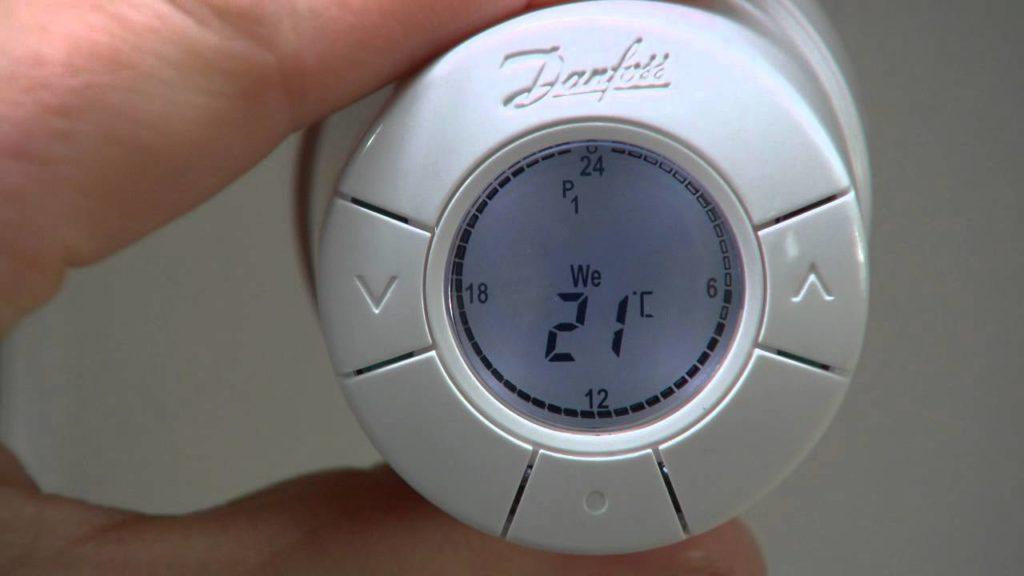
Oventrop
The German manufacturer positions itself on the market as a manufacturer of high-quality engineering fittings. Exclusive products from Oventrop set special accents in the room. The design and colors match the interior, as well as the shape and color of the elegant radiators.
The thermostat for heating radiators "Pinox" not only attracts attention with its design, but also impresses with its functionality. The thermostat is supplied with a threaded M 30 x 1.5 and a clamp connection. It allows you to easily and accurately adjust the temperature in the building. Thanks to the one-piece design, the regulator is immune to dirt and easy to clean. Works without power source.
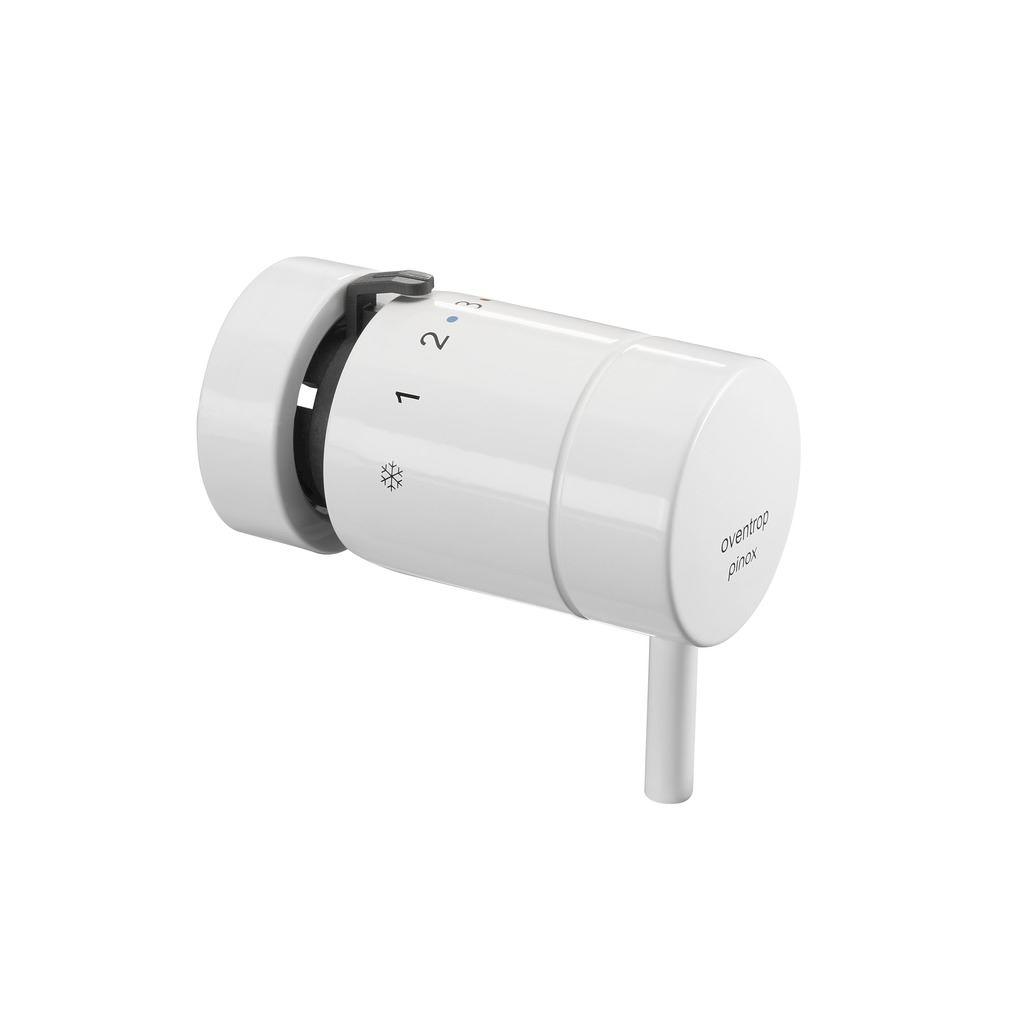
Thermostat "Uni SH" with liquid element and threaded connection M 30 x 1.5 is easy to operate and has a clear scale. The thermostat has a raised mark for the visually impaired. The selected setting value can be marked with a memo puck.
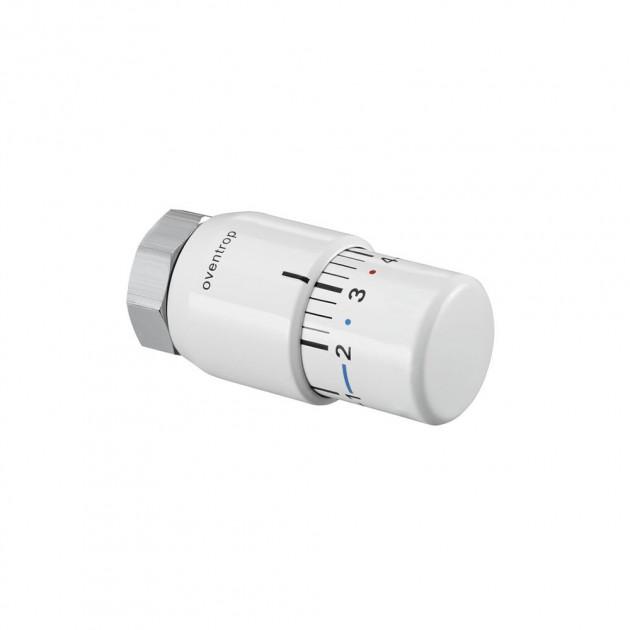
Heimier
Also a well-known German brand, produces more than 12 types of thermal heads. Basically, these are liquid regulators with the type of connection M30 * 1.5, M28 * 1.5, which is most often used in our country.
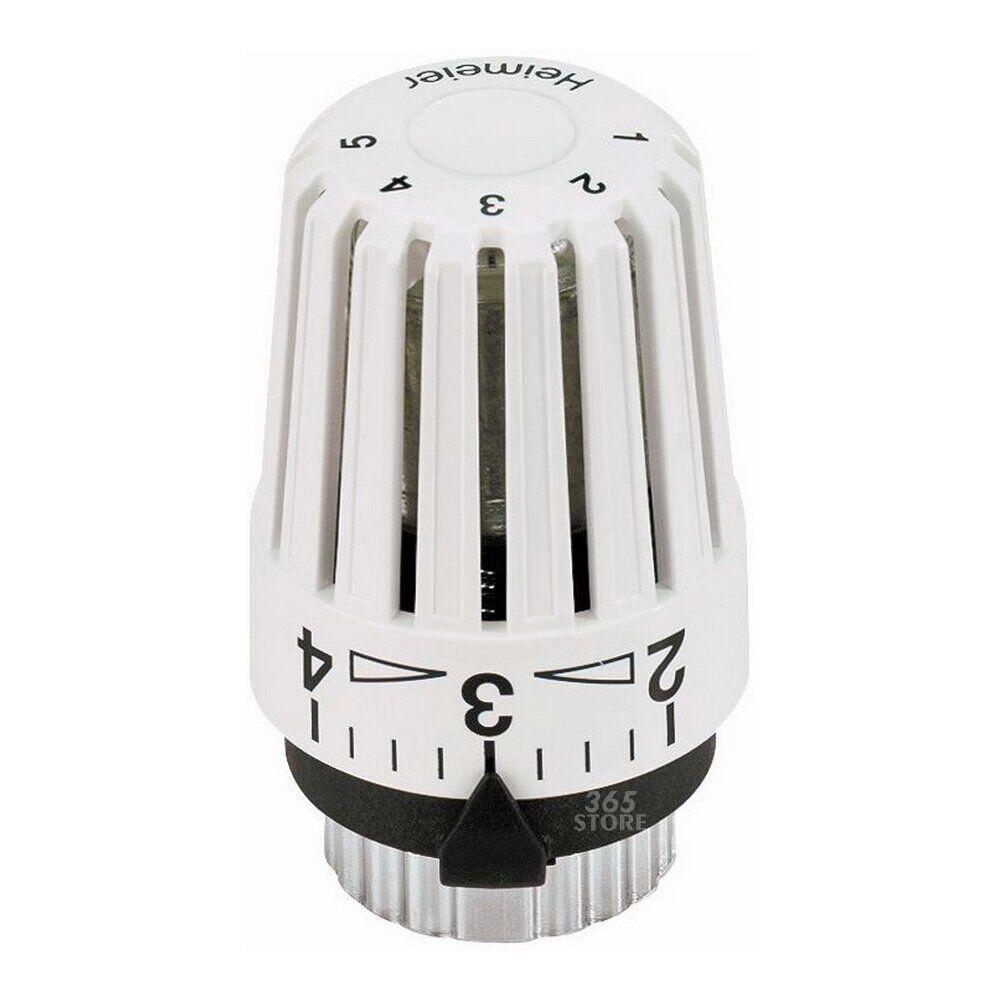
Among them you will find different thermal heads according to execution:
- with remote sensor;
- with remote control mechanism;
- anti-vandal for installation in public places.
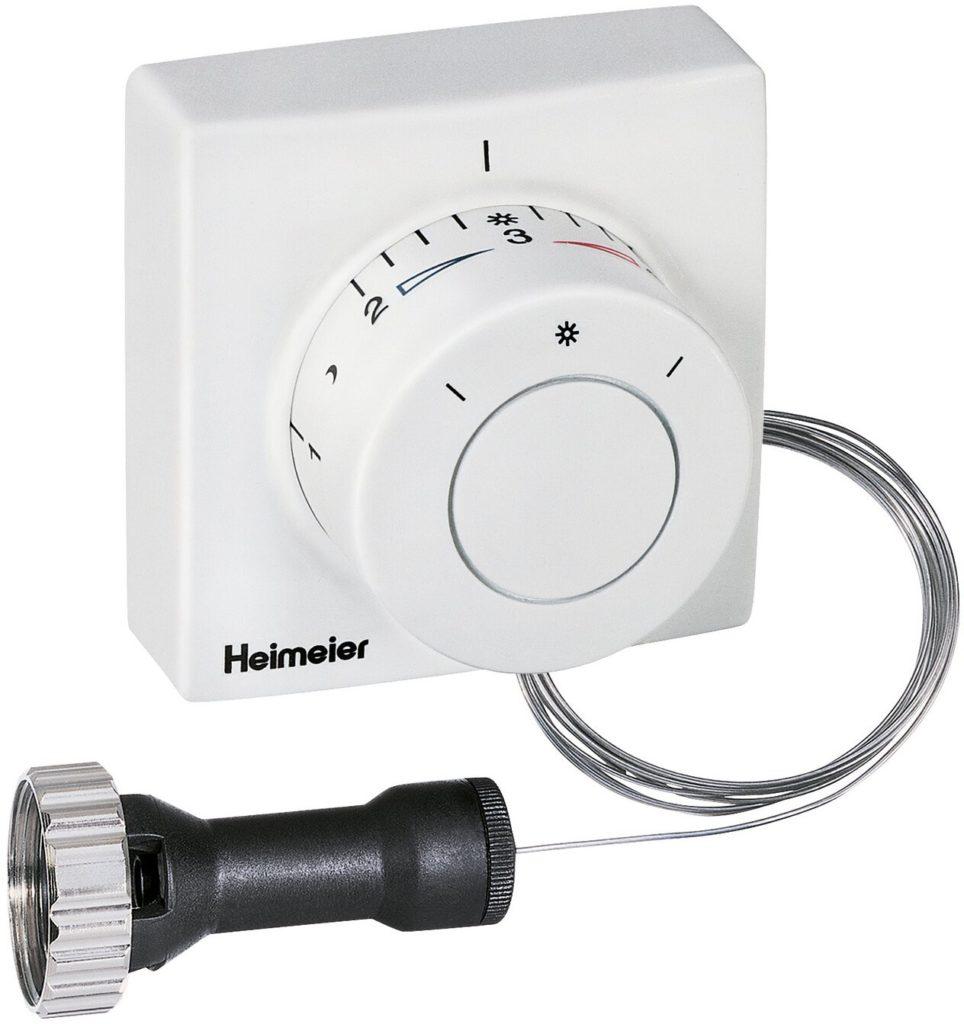
Conclusion: choosing the most optimal and convenient option for different cases
Now you know how the temperature controller works on a radiator, and you can create a comfortable temperature for your living environment. The choice of adjustment method will depend on the scheme of the heating system, your preferences and financial capabilities.
If you live in an apartment building, you can set the temperature of the batteries in single pipe heating systemif there is a bypass or in a two-pipe. In this case, it is convenient to use a three-way valve for mixing water flows.
In a two-pipe heating system, in an apartment building or a private house, there are many options for regulating the temperature of the batteries. You can use standard control valves with a valve, but it is much more convenient and efficient to use thermostats. They allow you to more accurately set the temperature in the room, and in automatic mode.


